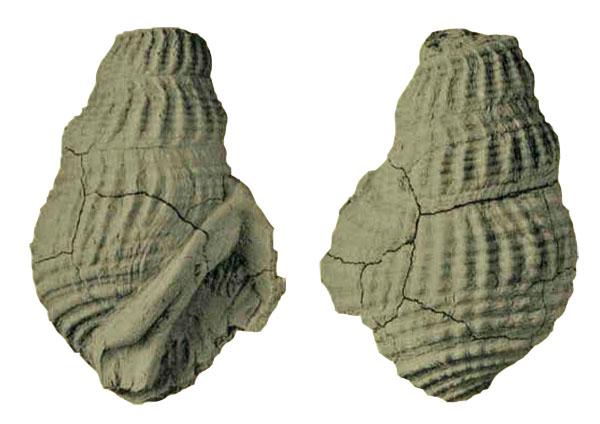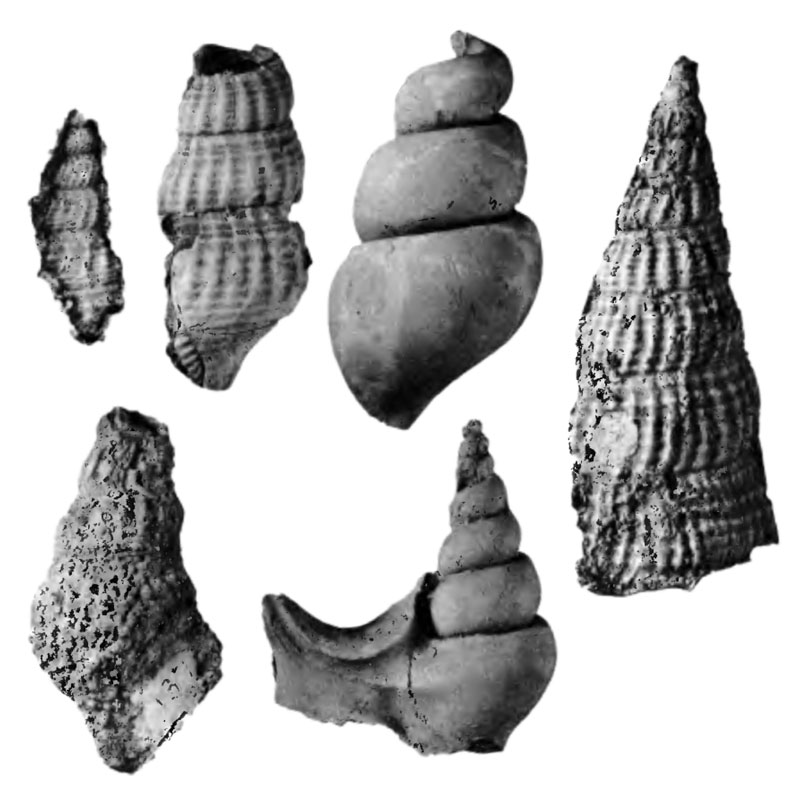Original description of Anchura noackensis by Stephenson, 1941, p. 295:
- "Shell large, thick, turreted. Suture closely appressed and only moderately impressed. Three of the larger whorls, including the body whorl are preserved in the holotype. Spiral angle about 40°; apex more slender. Number of whorls 10 or more. The sides of the whorls above the body whorl are moderately convex in the anterior two-thirds and strongly constricted in the posterior one-third bordering the suture. The sculpture includes both axials and spirals. On the penultimate whorl there are 24 moderately thick and prominent axials, each a little narrower than the adjacent interspaces; the trend of the axials forms an asymmetric curve, concave toward the front, the strongest part of the curve being on the constricted posterior band. The spirals are 8 in number, are moderately strong, are of unequal thickness and spacing, and form bluntly rounded nodes at their intersections with the axials; the two posterior spirals occupy the constricted band, and are more widely separated than the others; the closest spacing of the spirals is on the crest of the more swollen anterior part of the whorl. The body whorl rounds broadly down from the periphery to the columella; the base bears 5 primary spirals of unequal prominence and spacing, the two posterior ones of which are the stronger and the more widely spaced, and are separated by an interspace bearing a weak secondary spiral; the other three spirals become progressively smaller toward the columella. Numerous, obscure, spiral threads appear in places on the better preserved parts of the surface and probably a perfectly preserved shell would exhibit these threads over the greater part of its surface, including the interspaces, axials and spirals. The aperture is narrowly subovate. On the holotype the outer lip is broken away, but, approaching the aperture, the shell shows the characteristic generic expansion and divergence of the ribs, and doubtless the complete shell would exhibit an expanded birostrate lip such as that possessed by the type species, A. abrupta Conrad. The inner lip forms a thick callus on the base of the body whorl, and is deeply and broadly notched where it intersects the columella. The posterior or anal channel is moderately impressed; the anterior channel is broken away, but may be assumed
to form a narrow, greatly extended spine-like projection."
Locus typicus: 3 miles south, 30° west of Thrall, San Gabriel River, 2/5 mile above San Gabriel, Milam County, Texas, USA
Stratum typicum: Kemp Clay, Navarro Group, Maastrichtian, upper Cretaceous
Dimensions: Holotype USNM no. 76902: height 60+ mm, diameter about 34 mm; paratype USNM no. 76903: height 84+ mm, diameter 35 mm.
Anchura noackensis Stephenson, 1941, pl. 55, figs. 6, 7
- holotype
- Image courtesy The University of Texas at Austin
History and Synonymy
1960
Pterocerella noakensis [sic] in Sohl, 1960, pl. 13, fig 6 and 23-27
- image courtesy of the U.S. Geological Survey
References:


